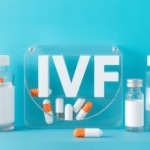Understanding Short-Term Disability for Pregnancy
Today we will be talking about short-term disability benefits for pregnancy. Navigating the world of maternity leave and disability benefits can be daunting, yet it is crucial for expectant mothers to understand their options. Short-term disability insurance is a type of coverage designed to provide financial support for individuals who are unable to perform their job duties due to a medical condition. In the context of pregnancy, this insurance helps cover the time off needed for recovery and adjustment following childbirth. Typically, these benefits last anywhere from a few weeks to several months, depending on the specific policy and the nature of the pregnancy. It is essential for pregnant individuals to be informed about the eligibility requirements, application process, and potential limitations of short-term disability insurance, as this knowledge can influence the overall pregnancy experience and financial stability.
1. What is Short-Term Disability Insurance?
Short-term disability insurance (STDI) is designed to provide income replacement when an employee is temporarily unable to work due to an illness, injury, or, in this case, pregnancy. Generally, these policies offer a percentage of the employee’s regular wages for a specified period—typically from a few weeks to six months. This temporary coverage is crucial for individuals who do not have sufficient savings or sick leave to cover their expenses while they are unable to work.
Understanding STDI is particularly important for pregnant individuals, as pregnancy can lead to conditions that may prevent them from working, especially in the weeks leading up to and following childbirth. It’s essential to review your employer’s policy and options available in your state, as laws and regulations can affect the benefits provided. Knowing the definition and function of STDI allows expectant mothers to make informed decisions about their maternity leave and financial planning.
2. How Is Short-Term Disability Funded?
Short-term disability insurance may be funded in several ways, depending on the policy and where you live. Some employers provide STDI as part of their benefits package, which means that the premiums are covered through employee benefits. In contrast, some employees may need to contribute to the premium through payroll deductions. For those self-employed or working in environments without employer-provided benefits, individual policies can be purchased independently from insurance providers.
It is essential to understand the details of your specific STDI plan, including waiting periods, duration of benefits, and any exclusions or limitations—especially concerning pregnancy-related claims. Access to short-term disability insurance can alleviate the financial stress associated with maternity leave and provide a valuable safety net during this critical time. Many states also have mandated disability programs, so checking local laws and regulations is also advisable.
3. Eligibility Criteria for Short-Term Disability for Pregnancy
Eligibility for short-term disability benefits varies by provider, but generally, expectant mothers must meet the following criteria:
- Active Employment: Typically, applicants must be actively employed and working in a covered job to qualify for STDI benefits.
- Waiting Period: Most policies include a waiting period that must be fulfilled before coverage begins. This can be a fixed number of days after the claim is filed.
- Medical Documentation: Proof of medical conditions related to pregnancy, such as complications or the need for bed rest, may be required. Documentation from a healthcare provider is typically necessary for claims.
- Policy Terms: Understanding specific terms, like how long you must have been enrolled in the policy to be eligible for benefits, is crucial.
To navigate these criteria effectively, expectant mothers should contact their human resources department or review their insurance policy for specific regulations and requirements.
4. Application Process for Short-Term Disability
Applying for short-term disability benefits requires careful attention to detail. The process typically involves several steps:
- Notify Your Employer: Inform your employer about your pregnancy and the need for short-term disability. Early communication can help in planning your leave.
- Gather Necessary Documentation: Collect medical documentation that outlines your pregnancy status and any complications or need for leave.
- Complete the Application: Fill out the STDI application form provided by your insurer, and ensure that all necessary fields are accurate and complete.
- Submit Your Application: Send in your application along with the required medical documentation before your expected leave date.
- Track Your Claim: Follow-up with your insurer to check the status of your claim and address any issues promptly.
Understanding the application process can decrease stress and increase the likelihood of a successful claim. Also, it’s advisable to start the application process as soon as your doctor recommends taking leave.
5. Duration of Benefits for Pregnancy-Related Claims
The duration of short-term disability benefits for pregnancy can vary widely, depending on the individual policy. Generally, most plans offer coverage from a few weeks up to six months, with many policies providing:
- Pre-birth Coverage: Benefits may begin two to four weeks before your due date, especially in cases of complications.
- Post-birth Coverage: After childbirth, many plans cover up to six weeks for normal deliveries and eight weeks for cesarean deliveries.
Understanding the exact duration of potential benefits available to you is vital as it allows for better financial planning and can help during the transition back to work post-pregnancy. Additionally, reviewing your company’s policy for any variations is recommended to avoid any surprises.
6. Frequently Asked Questions about Short-Term Disability and Pregnancy
Anticipating common queries related to short-term disability and pregnancy can help clarify concerns:
- Can I apply for short-term disability if my pregnancy is uncomplicated? Yes, you can apply for STDI even if your pregnancy is routine. However, the approval depends on your specific policy terms.
- How does STDI affect my maternity leave? STDI gives you additional financial support during your maternity leave, making it easier to focus on your recovery and bonding with your baby.
- What if I experience complications during my pregnancy? If complications arise, you should discuss these with your healthcare provider, as they may affect both your recovery time and your claim duration.
- Is STDI paid in conjunction with other benefits? Depending on company policies, STDI can sometimes be paid alongside paid time off, but this varies widely.
- Can I extend my short-term disability claim? If you have ongoing medical issues related to your pregnancy, you can discuss the possibility of extending your claim with your insurer.
7. State Regulations and Short-Term Disability
State laws can significantly impact short-term disability coverage and benefits for pregnancy. Some states have mandated programs that provide disability insurance, while others do not. It’s essential for expectant mothers to familiarize themselves with their state’s disability regulations. States like California, New Jersey, and New York have their disability programs, which offer benefits apart from employer-provided plans. Each state’s policies may include variations such as:
- Benefit Amount: This could differ by state, with some offering a higher percentage of wages.
- Duration: Some states offer longer benefit periods than others for pregnancy-related claims.
- Eligibility Requirements: Each state may have different requirements for employees to qualify for these benefits.
Knowing state-specific regulations ensures that expectant mothers understand the full scope of their rights and benefits. Consulting with a local human resources representative or legal advisor can further clarify these matters.
8. Employer Policies and Variations
Employer policies concerning short-term disability can vary significantly across different organizations. Some employers offer more robust short-term disability benefits, while others may have stricter limitations. It’s crucial to review your company’s policy details to understand:
- Premium Payments: Determine if your employer fully funds the policy or if you are responsible for a portion of the premium.
- Waiting Periods: These can differ between employers, impacting how quickly you can access benefits.
- Benefit Amounts: Some policies may offer a more substantial percentage of your salary than others, which can significantly affect financial planning during maternity leave.
Discussing your questions with HR can help clarify any uncertainties and provide a clear understanding of what to expect when using your benefits.
9. Transitioning Back to Work After Disability
Returning to work after a period of short-term disability can be both exciting and challenging. Here are some tips to make the transition smoother:
- Stay in Touch: Maintain communication with your employer during your leave to be informed about any changes in the workplace.
- Plan Your Return: Discuss a potential phased return to work if necessary, which can ease the transition and allow for adjustments.
- Seek Support: Utilize resources such as employee assistance programs (EAP) for counseling or support networks that can assist with this transition.
- Know Your Rights: Familiarize yourself with company policies surrounding parental leave and your rights as an employee.
Understanding the challenges of returning to work can prepare you better and promote a more manageable reintegration experience.
10. Emotional and Mental Health Considerations
The journey through pregnancy and the transition into motherhood can affect mental and emotional health. It is essential to prioritize your well-being alongside physical health during this time. Consider the following:
- Postpartum Mental Health: Be aware of signs of postpartum depression and anxiety, and don’t hesitate to reach out for professional help if these feelings arise.
- Take Time for Yourself: Allow time for self-care and relaxation to support mental and emotional recovery during the transition.
- Build a Support Network: Surround yourself with supportive friends, family, and colleagues who can offer encouragement and help.
- Seek Guidance: Consult with healthcare professionals about mental health resources available to new parents.
Emphasizing mental and emotional well-being is critical for you and your baby’s health during and post-pregnancy.
Conclusion
Short-term disability insurance for pregnancy plays a crucial role in supporting expectant mothers during a vital life transition. By understanding the various components such as eligibility criteria, benefits duration, application processes, and the influence of state regulations, mothers can navigate this period with greater ease. The importance of being proactive about these options cannot be overstated, as it allows for informed decision-making and better financial security during maternity leave. When combined with a supportive workplace and mental health resources, short-term disability benefits create opportunities for a healthy recovery and adaptation to motherhood.
Being knowledgeable about how short-term disability interacts with various employer policies and state laws can further empower expectant mothers to advocate for their rights and make the most of available benefits. Effective communication with employers and engaging with health care providers can serve as tools for optimizing maternity leave experiences.
Ultimately, every pregnant person deserves the opportunity to take the necessary time off for healing, bonding with their newborn, and navigating the transition into motherhood. By preparing ahead of time and understanding the ins and outs of short-term disability benefits, expectant mothers can focus on what truly matters—welcoming their new family members with joy and peace of mind.
Frequently Asked Questions
1. What documentation do I need to apply for short-term disability for pregnancy?
Typically, you will need medical documentation confirming your pregnancy and any complications that may warrant leave. Your healthcare provider can assist in providing this.
2. How long does it take to process a short-term disability claim?
The processing time for short-term disability claims can vary, but insurers usually take between a few days to several weeks to review and approve a claim.
3. What if my employer doesn’t offer short-term disability?
If your employer does not provide STDI, you can consider purchasing an individual policy to ensure you have coverage during your maternity leave.
4. Can I use short-term disability along with parental leave?
Yes, in many cases you can use short-term disability benefits in conjunction with parental leave, which allows for extended time away from work for parenting.
5. Will short-term disability benefits affect my other benefits?
Generally, short-term disability benefits are intended to supplement your income, and they won’t directly affect other benefits unless stated otherwise by your employer’s policies.
Further Reading
3.5 tog sleeping bag temperature guide
What Type of Psychotherapy Is Best for Anxiety?







